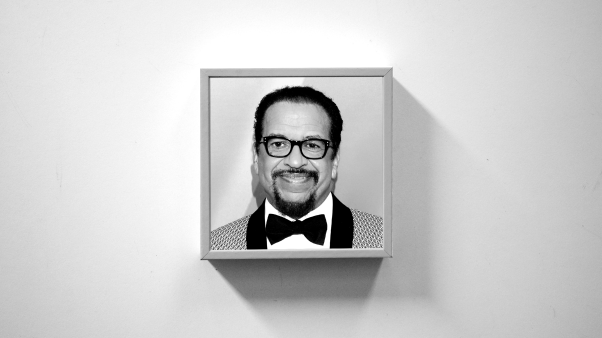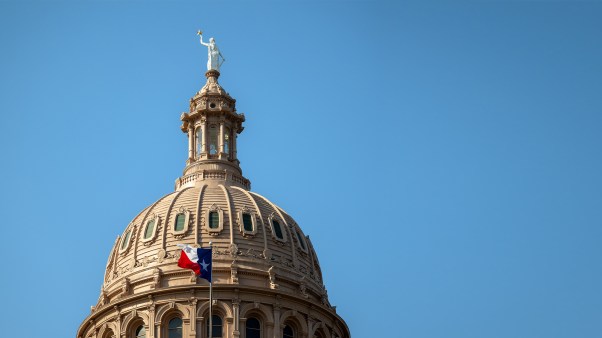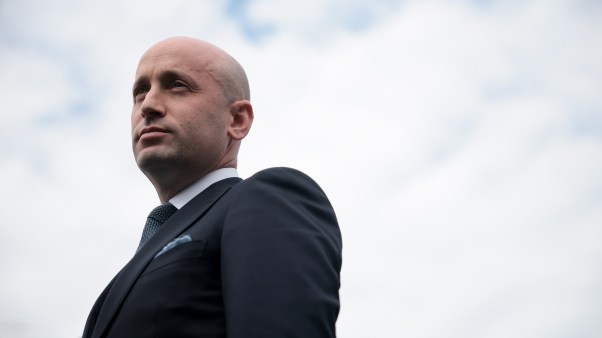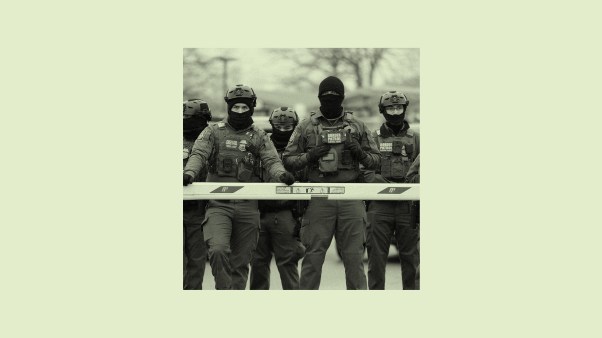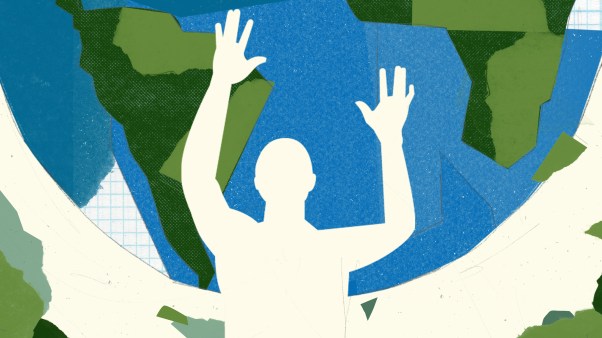I grew up listening to my dad play the guitar. He was an amateur with the instrument, but what he lacked in training he made up for with his pristine voice, which would soar through the rooms and wash over you like warm water. He made up a lot of his own songs; some were forgettable, but there was one I have never forgotten. The chorus, which was really slow and always hit the top of his register, went like this:
I don’t know how to pray / Don’t know what to say
/ I think I’ve lost my way.
Years later, I still shudder at the raw beauty of his sonorous confession. It was a troubling statement from a man I admired. But the idea that longing to pray is something worth singing about moved me. It still does.
At times I imagine this song being sung as a confession over the modern American church. I don’t think we know how to pray. Which makes the new book from New York City pastor John Starke, The Possibility of Prayer: Finding Stillness with God in a Restless World, all the more urgent. The title alone stokes the heart the same way my father’s song did. I wanted to read it before I could even open it, and it did not disappoint.
Neatly divided and very readable (I finished it, without rushing, in one sitting on a plane), the book is broken into two sections: “The Possibility of Prayer” and “The Practice of Prayer.” Broadly speaking, the first half describes what we should think about prayer, and the second half focuses on what we should do about it.
The Greatest Insanity
Most believers, like me, live with the vague assumption that prayer is a good thing, and attendant with that is the nagging suspicion that we should probably be praying more. So I appreciate how Starke begins with the opposite assumption—the impossibility of prayer. “Somehow,” he writes, “humans have pondered the idea of communicating with this God of exploding stars. Did we inherit this insanity? . . . Why would we think this is a good idea?”
He has a point. Where do we get off thinking we have any right to speak to God in the first place?
This leads Starke into a strong opening claim: The only reason prayer is a possibility is because Jesus came to us, lived for us, died for us, rose again for us—and now prays for us. Everything else proceeds from there. This is a comforting reminder that this book is not foremost about us and why we should pray more. Before anything else, it’s a meditation on the ridiculous notion that we little humans even have access to a God who spins planets and explodes stars. As Starke observes, this is “either the greatest insanity or the most wonderful news.”
The first half of the book proceeds accordingly, emphasizing the God we pray to above the creatures that pray. Anyone in love knows that you spend more time thinking about your beloved than worrying about what you’ll say or do. That’s the beauty of love—its self-forgetfulness. And that’s the beginning of prayer, too: this posture of being awestruck before a God who, remarkably, condescends to listen.
My criticisms of the book are rather trivial: I like a lot of storytelling, and I could have used more throughout. Further, at times the chapters can seem arbitrarily divided, such that the topics end up bleeding into each other. But the upside is that the book feels like an extended rumination on prayer.
Starke is by far at his best when we’re invited into his home to listen to him pray. Or watch his prayer routine. Or sit in the quiet with him while the psalms teach him to pray. This was an important movement for me, because I realized about halfway through the book that despite my lawyerly proclivity for systematic argument, I suspect I don’t really need to listen to people talk about why we should pray more. I need to listen to people pray more. And the personal dimension of Starke’s book allowed me to do that. As I watched him move through his prayer life, I began simply wanting to be a part of it. I wanted to imitate it. I started longing to pray.
Once you long to pray, it is helpful to have a place to start, which is what makes part two of the book so important. In fact, I think Starke’s chief contribution comes through marrying this compelling vision of a life of prayer with the practical offerings put forward in the second part of the book. It’s this combination that moves us from being people who long to pray to being people who actually pray. That’s an important movement, one that many of us never make.
Starke’s chapter on meditation is a good example. As someone who is prone to slip into an intellectual routine of Bible reading, I found Starke’s recommendation of the practice of meditating on Scripture compelling. “Meditation,” he writes, “is the discipline that lights the fuse between the understanding of the mind and the tasting of the heart—the knowledge of God and the joy of his presence.”
Elsewhere in the book, Starke reminds us (through the words of Athanasius) that “most Scriptures speak to us; the Psalms speak for us.” The mediation chapter gets specific on how to take a piece of the Bible and, instead of simply reading it, mediate on how it speaks about us, how it speaks for us, how it makes our hearts hot, and how we can then tell God about that. Simple enough, on the surface—but as I said before, it seems I cannot get enough glimpses of practice. I need to see how other people pray, to watch what they say and do.
No Small Adjustment
I don’t think this is merely a function of my own inclination toward practice. I think there’s something more going on.
The modern world has done such a thorough job stripping us of all authority and structure that, whether we admit it or not, we’re all dying for someone to tell us what to do again. To tell us how to lead our lives. To tell us how, among other things, to pray. So these practical examples become water in our modern desert of discipline. Because it’s not as if our lives are conducive to prayer, and we just need a reminder or a little lesson to motivate us. It couldn’t be more the opposite.
Call it the pace of modern life, the busyness, or an obsessive compulsion toward always driving or controlling something, but whatever you call it, this is the default pattern. Starke delves into this at one point in the book, naming it as our fear of stillness:
In stillness, intolerable things begin to happen. . . . Busyness is good news for those of us who want to resist stillness like the plague. Busyness helps us avoid the ghosts and goblins of our fears and anxieties—but it cuts us off from healing as well. . . . [O]ur age of pathological efficiency has taught our hearts to resist any moments of quiet, un-hurried time. We fear the judgment of using our time inefficiently. You cannot prove your worth by your quiet prayers in secret.
While many of us may have a longing to pray, odds are we lead lives not at all conducive to what prayer actually requires. The kind of prayer that Starke writes about is not something we are asked to tack onto our lives. It is something we are asked to reorient our lives around. By the end of the book, that’s what I saw as the central theme: Prayer is a way of life.
If we are to take Starke’s practices of prayer seriously, we would have to consider reorienting our lives into rhythms of feasting, fasting, and sabbathing. We’d have to wonder what life would look like if prayer happened in community and in solitude, in silence and in song. To be honest, this would probably not be a small adjustment. Even so, it sounds like a much lighter burden than the one most of us carry simply by doing nothing about the disorder in our lives that crowds out the possibility of prayer.
In one sense, this could mean the book ends on too ambitious a note—who would really do all that? But I don’t think this is the case. I think these practices are precisely the kind of rhythms that the modern world has flattened into the deafening white noise of rush, hurry, scrolling, and distraction—and it is tremendously refreshing to hear that there is a different way to live. Hearing those notes come through was like hearing echoes of my dad’s song again.
Speaking of which, his chorus had some lines I didn’t tell you about:
I don’t know how to pray / Don’t know what to say / I think I’ve lost my way.
So please, won’t you take me by the hand / Make me a better man . . .
I want to say the things / you’ve said to me.
It’s best to think of Starke’s book as a gentle invitation that takes you by the hand and walks you into the possibility of prayer, even into the possibility of a life of prayer. I would suggest taking him up on the invitation.
Justin Whitmel Earley is a business lawyer in Richmond, Virginia and the author of The Common Rule: Habits of Purpose for an Age of Distraction (InterVarsity Press). Find him at www.thecommonrule.org.




